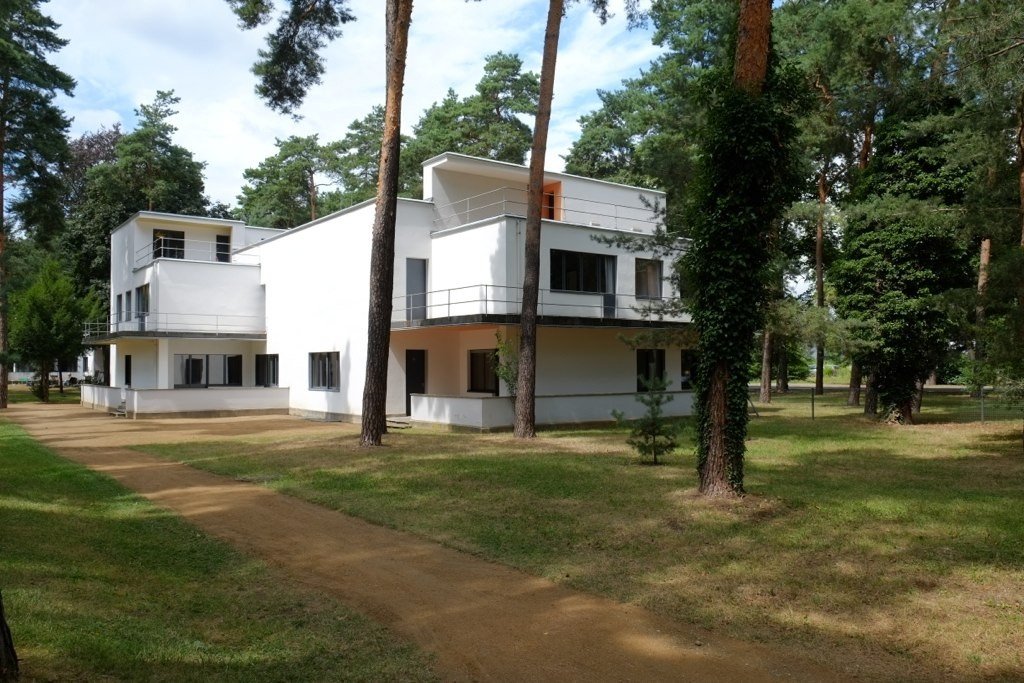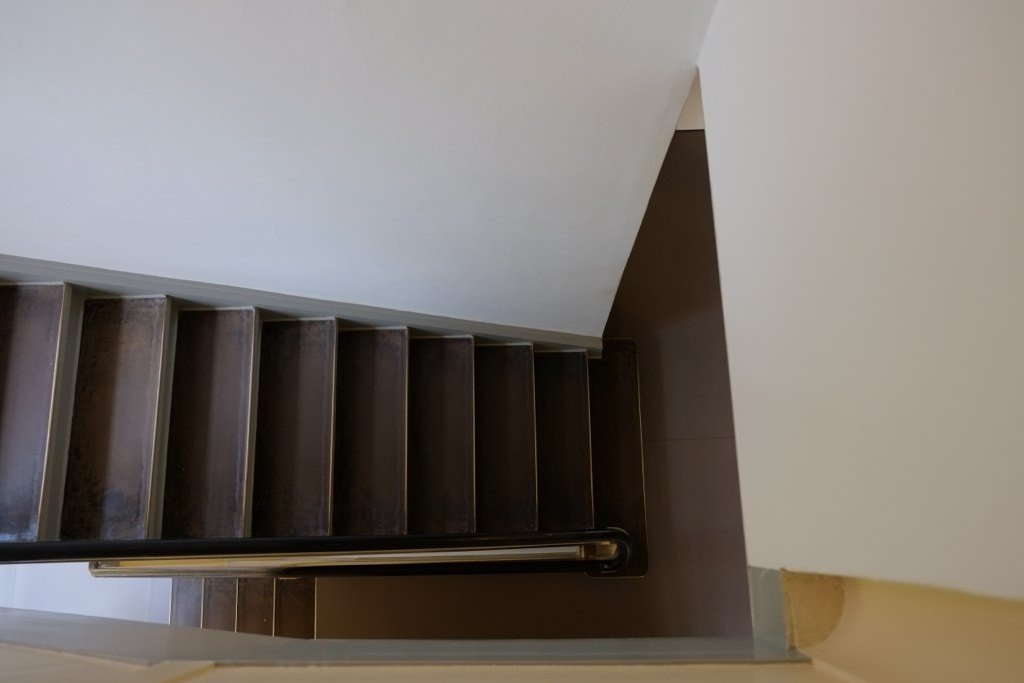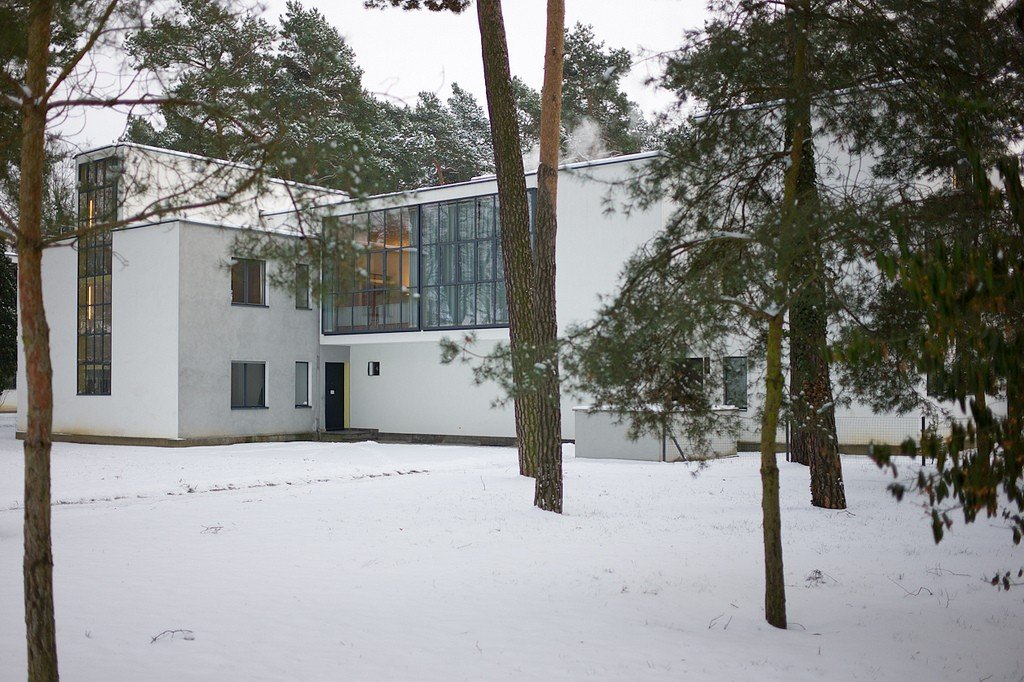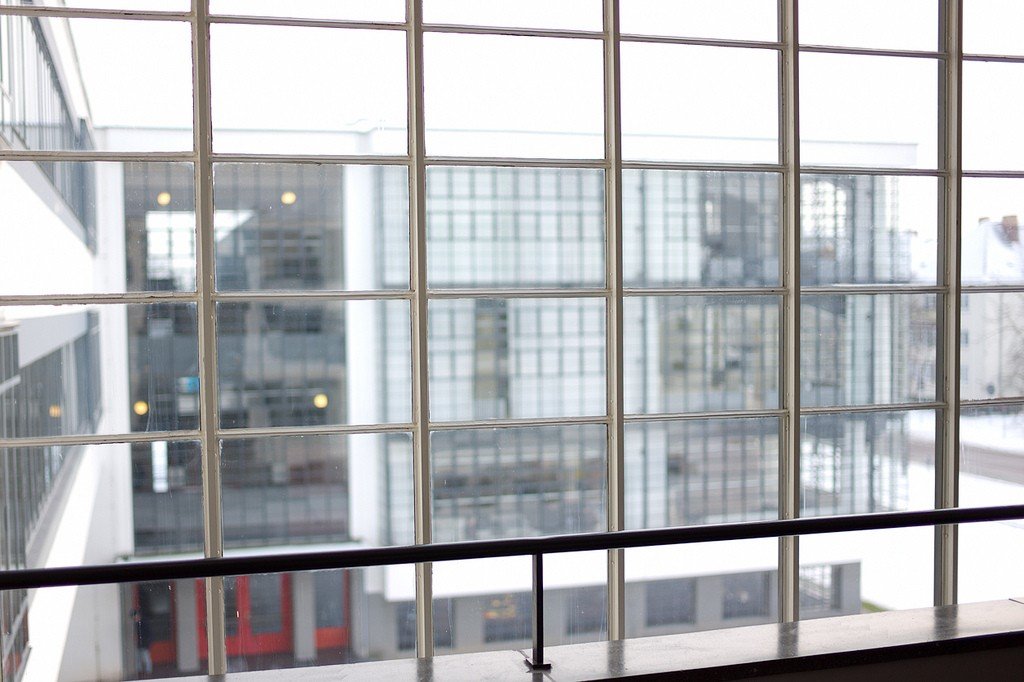Bauhaus
In the socio-political confusion at the end of World War I, Walter Gropius and a group of like-minded designers and artists merged the Weimar School of Fine Arts and the Henri Van de Velde School of Applied Arts to form a new association, the Bauhaus. Their goal was to develop a new style of design and architecture to meet the needs of the new era, in which the aesthetics of functionalism and technology were to be combined to create objects both aesthetically pleasing and functional, suitable for cheap production. Products of the design school included ceramics, furniture, and wallpaper.










General information
The most significant surviving Bauhaus-style buildings are those in Dessau, where the school moved in 1925. These are primarily the school building, which now houses the School of Design, the Moses Mendelssohn Center, the Steel House (Stahlhaus), and a restored apartment in Hannah Meyer’s “housing with access to balconies” complex. In Weimar, the original school building houses Weimar’s Bauhaus University, and the museum is interesting with notable examples of furniture. All of these sites are listed as UNESCO World Heritage Sites.
.In Berlin, the archives and museum are housed in a Walter Gropius-designed building. In addition to many documents of interest to researchers, the collection includes quite a few objects made by workshop students, as well as books, paintings, drawings, samples of finished products, architectural plans and a photographic archive. Other buildings built in the Bauhaus style include the Sommerfeld and Otto houses.
.Famous works of furniture design include the “Cantilever” (on a bracket) chair by Dutch designer Martha Stam, in which she utilized the unique properties of steel, and the “Wassily” chair by Marcel Breuer.
.